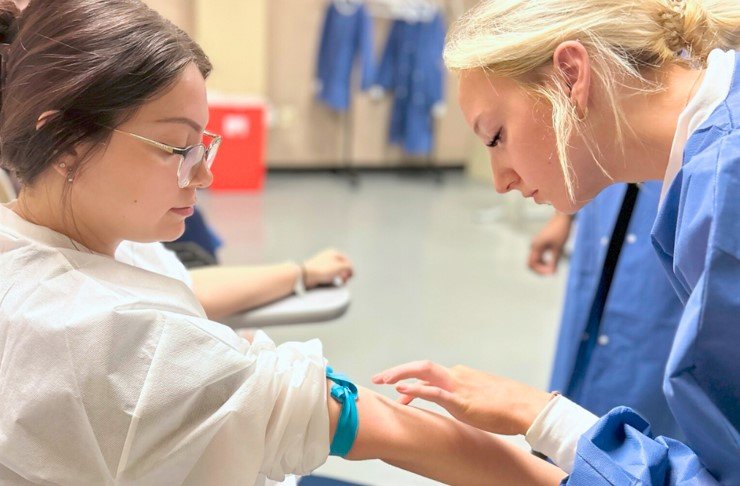Innovative Solutions in Hospital Supply and Equipment Management: A Collaborative Approach
Summary
- Hospital supply and equipment vendors are developing innovative solutions to improve accessibility in healthcare facilities in the United States.
- New technologies are being implemented to streamline Supply Chain management and ensure timely delivery of medical supplies to hospitals.
- Collaborations between vendors and healthcare facilities are key to identifying and implementing solutions that meet the unique needs of each institution.
The Importance of Innovative Solutions in Hospital Supply and Equipment Management
Hospital supply and equipment management play a critical role in the efficient operation of healthcare facilities in the United States. The timely delivery of medical supplies and equipment is essential to ensuring quality patient care and maintaining the overall functioning of hospitals. However, the traditional methods of managing hospital supplies and equipment are often inefficient and prone to errors. As such, hospital supply and equipment vendors are constantly striving to develop innovative solutions to address these challenges and improve accessibility in healthcare facilities across the country.
Challenges in Hospital Supply and Equipment Management
There are several challenges associated with hospital supply and equipment management in the United States, including:
- Inventory Management: Keeping track of inventory levels and reordering supplies in a timely manner can be a daunting task for hospital staff.
- Supply Chain Issues: Delays in the Supply Chain can lead to shortages of critical medical supplies, impacting patient care.
- Equipment Maintenance: Ensuring that medical equipment is properly maintained and serviced is essential to preventing breakdowns and ensuring accurate diagnostics.
Innovative Solutions in Hospital Supply and Equipment Management
To address these challenges, hospital supply and equipment vendors are developing a range of innovative solutions, including:
- Automated Inventory Systems: Vendors are implementing automated inventory systems that track supply levels in real-time and automatically reorder supplies when necessary.
- RFID Technology: Radio-frequency identification (RFID) technology is being used to track the movement of medical supplies throughout the hospital, reducing the risk of lost or misplaced items.
- Data Analytics: Vendors are utilizing data analytics to forecast supply needs and optimize inventory levels, improving efficiency and reducing costs.
Collaboration Between Vendors and Healthcare Facilities
Collaboration between hospital supply and equipment vendors and healthcare facilities is essential to the successful implementation of innovative solutions. By working together, vendors and healthcare institutions can identify the unique needs of each facility and develop tailored solutions that address specific challenges.
Benefits of Collaboration
Collaboration between vendors and healthcare facilities offers several benefits, including:
- Customized Solutions: Vendors can work closely with healthcare facilities to develop customized solutions that meet the specific needs of each institution.
- Improved Communication: Collaboration fosters open communication between vendors and healthcare facilities, ensuring that both parties are aligned in their goals and objectives.
- Enhanced Efficiency: By working together, vendors and healthcare facilities can streamline processes and improve the overall efficiency of Supply Chain management.
Case Study: Innovative Solutions in Action
One example of successful collaboration between a hospital supply and equipment vendor and a healthcare facility is the implementation of an automated inventory system at a large hospital in the United States. The vendor worked closely with the hospital staff to customize the system to meet the specific needs of the facility, resulting in improved inventory management and reduced Supply Chain issues.
Conclusion
In conclusion, hospital supply and equipment vendors are playing a crucial role in developing innovative solutions to improve accessibility in healthcare facilities in the United States. By implementing new technologies and collaborating closely with healthcare institutions, vendors are helping to streamline Supply Chain management and ensure the timely delivery of medical supplies. Moving forward, continued collaboration between vendors and healthcare facilities will be essential to addressing the unique challenges of hospital supply and equipment management and ensuring the efficient operation of healthcare facilities across the country.

Disclaimer: The content provided on this blog is for informational purposes only, reflecting the personal opinions and insights of the author(s) on the topics. The information provided should not be used for diagnosing or treating a health problem or disease, and those seeking personal medical advice should consult with a licensed physician. Always seek the advice of your doctor or other qualified health provider regarding a medical condition. Never disregard professional medical advice or delay in seeking it because of something you have read on this website. If you think you may have a medical emergency, call 911 or go to the nearest emergency room immediately. No physician-patient relationship is created by this web site or its use. No contributors to this web site make any representations, express or implied, with respect to the information provided herein or to its use. While we strive to share accurate and up-to-date information, we cannot guarantee the completeness, reliability, or accuracy of the content. The blog may also include links to external websites and resources for the convenience of our readers. Please note that linking to other sites does not imply endorsement of their content, practices, or services by us. Readers should use their discretion and judgment while exploring any external links and resources mentioned on this blog.
